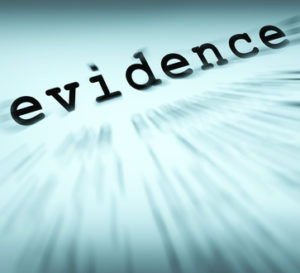 The U.S. Court of Appeals for the Seventh Circuit recently held that neither extrinsic evidence of confusion, nor materiality, is required for claims under § 1692g(a) of the federal Fair Debt Collection Practices Act (FDCPA).
The U.S. Court of Appeals for the Seventh Circuit recently held that neither extrinsic evidence of confusion, nor materiality, is required for claims under § 1692g(a) of the federal Fair Debt Collection Practices Act (FDCPA).
The Court also held that a company that is itself a debt collector may be liable for the violations of the FDCPA by its debt collector agent.
A copy of the opinion in Janetos v. Fulton Friedman & Gullace, LLP is available at: Link to Opinion.
The defendant creditor allegedly acquired defaulted consumer debts owned by the plaintiffs and did not dispute that it was a debt collector within the meaning of the FDCPA. The defendant collection law firm sent initial collection notices to the plaintiffs on behalf of the defendant creditor. The notices stated that the account had been transferred from the creditor to the law firm. The notices did not provide additional details about the relationship between the two defendants and did not state who currently owned the debts.
The plaintiffs brought suit under the FDCPA, alleging that the notices violated 15 U.S.C. § 1692g(a)(2) of the FDCPA by failing to identify the current owner of the debt. They also alleged the letters violated 15 U.S.C. § 1692e, which prohibits the use of false or misleading representations or means in connection with the collection of a consumer debt.
The trial court certified a plaintiff class consisting of all consumers who received the letters personally, and a subclass of consumers who had been sent the letters in care of their attorneys. On cross-motions for summary judgment, the trial court ruled in favor of the defendants.
The trial court acknowledged the form letter’s ambiguity on the question of the current owner of the debt, noting that the word “transferred” could mean either conveyance of title or assignment for collection and that, applying the ordinary meaning of “transfer,” the letter did not “suggest any particular form or method of conveyance.”
Nevertheless, the trial court held that the ambiguous letter and plaintiffs’ affidavits attesting to their own confusion failed to create a genuine dispute of material fact for trial under § 1692e, and that the plaintiffs failed to offer evidence that the omission of the identification of the creditor met the materiality requirement implied for most § 1692e claims. The trial court also rejected the plaintiffs’ § 1692g(a)(2) claim on the same grounds as the § 1692e and e(10) claims, including lack of materiality. The plaintiffs appealed.
As you may recall, the FDCPA, at § 1692g(a), provides that in either the initial communication with a consumer in connection with the collection of a debt or another written notice sent within five days of the first, a debt collector must provide specific information to the consumer, including “the name of the creditor to whom the debt is owed.” 15 U.S.C. § 1692g(a)(2).
The Seventh Circuit noted that, to satisfy § 1692g(a), the debt collector’s notice must state the required information clearly enough that the recipient is likely to understand it.
Examining the notices at issue, the Seventh Circuit held that, standing alone, the fact that the letters merely included the creditor’s name did not establish compliance with the FDCPA. Instead, the Court held that in order to comply with 15 U.S.C. § 1692g, the notice must identify the creditor as the creditor to whom the debt is owed.
The defendants argued that the notice nevertheless complied with § 1692g(a)(2) because in its entirety, the notice disclosed the legal relationship between the creditor and the law firm. However, the Seventh Circuit found that nothing in the notice pointed to the deduction that the law firm was collecting the referenced debts on the creditor’s behalf, or that the creditor remained the current owner of the debt.
The Seventh Circuit also rejected the defendants’ argument that a reasonable consumer would recognize the creditor as the debt owner. The Court noted that, even if the consumer would recognize the creditor as the debt owner at some time in the past, the notice stated that the account had since been transferred. The Court noted that the defendants did not explain how an understanding of the creditor’s former role would have shown its current role.
The defendants also argued that the notice included language stating the law firm would honor any payment plans or settlement arrangements the consumer may have made with the creditor. However, the Seventh Circuit noted that the defendants failed to explain how this language showed that the creditor is the current debt owner.
Accordingly, the Seventh Circuit held that the notices did not disclose the name of the current creditor, and therefore violated § 1692g(a)(2).
In addition, the defendants argued that the plaintiffs were required to come forward with extrinsic evidence of actual confusion to survive summary judgment as the letters were at worst merely ambiguous.
The Seventh Circuit noted that claims under § 1692e claims have been sorted into three categories.
The first category includes cases in which the challenged language is plainly and clearly not misleading. No extrinsic evidence is needed to show that the creditor ought to prevail in such cases.
The second category includes debt collection language that is not misleading, or confusing on its face, but has the potential to be misleading to the unsophisticated consumer. In such cases, plaintiffs may prevail only by producing extrinsic evidence, such as consumer surveys, to prove that unsophisticated consumers do in fact find the challenged statements misleading or deceptive.
The third category is cases in which the challenged language is plainly deceptive or misleading, such that no extrinsic evidence is required for the plaintiff to prevail.
The defendants argued the letters were at worst in the second category, and merely susceptible to more than one interpretation. However, the Seventh Circuit held that § 1692g(a)(2) requires a particular disclosure, and extrinsic evidence is not required to show consumer confusion. In the Court’s words, “[s]ince the name was on the letters, some might correctly guess that [the defendant creditor] was the current creditor, but a lucky guess would have nothing to do with any disclosure the letters provided. Compliance with the clear requirements of § 1692g(a)(2) demands more.”
The Seventh Circuit relied on Chuway v. National Action Financial Services, Inc., 362 F.3d 944 (7th Cir. 2004), which related to the debt collector’s requirement of stating the amount of debt in the notice provided under 15 U.S.C. § 1692g. The Seventh Circuit in that case concluded that although the “balance” was disclosed in the letter, the reference to obtaining the “most current balance information” implied that the consumer might actually have owed some unspecified larger amount.
The Seventh Circuit also held in Chuway that under those circumstances, the plaintiff did not need to present extrinsic evidence of confusion. Her affidavit attesting to her own confusion, coupled with the fact that it was “apparent just from reading the letter that it is unclear,” was sufficient to create a triable issue.
Here, the Court noted that the notice did not actually identify the creditor as the current debt owner at all and left the impression that the creditor may have transferred the debt to the law firm. The plaintiffs provided affidavits stating they were unable to determine who currently owned the debt, and thus the Court held that no further evidence of consumer confusion was necessary.
Next, the Seventh Circuit addressed the trial court’s alternative reasoning that the violation of the FDCPA was not material. The Seventh Circuit noted that in enacting § 1692g(a)(2), Congress specifically determined that a debt collector must include in its § 1692g(a) notice the name of the creditor to whom the debt is owed. Accordingly, the Court held that the failure to make the disclosure is a failure the FDCPA is meant to penalize, and there is no need for an individual inquiry about the materiality of any given letter recipient.
The defendants argued that in this particular case knowing the current creditor would not have affected consumers’ rights. However, the Seventh Circuit held that conclusion overlooked the potential for fraud. The Court noted that, unless the unsophisticated consumer makes the effort to demand verification under § 1692g, a dishonest collector could confirm that the consumer should send it a payment to extinguish the debt, and that consumer would find that she had lost that money while her actual debt remained unpaid.
Lastly, the defendant creditor argued that even if the law firm was not entitled to summary judgment, the creditor could not be held vicariously liable for the notices the law firm drafted and sent.
However, the Seventh Circuit noted that the Ninth and Sixth Circuits have held that debt collectors are liable for violations of the FDCPA committed by others acting on their behalf.
According to the Court, the question of vicarious liability under the FDCPA turns on whether the defendant whom the plaintiff seeks to hold vicariously liable is itself a debt collector.
The Seventh Circuit held that a debt collector should not be able to avoid liability for unlawful debt collection practices simply by contracting with another company to do what the law does not allow it to do itself. On the other hand, a company that is not a debt collector would not ordinarily be subject to liability under the FDCPA at all.
Here, the defendant creditor did not dispute that it was a debt collector, and therefore the Court held that the defendant creditor may be held liable for the defendant law firm’s violations of the FDCPA.
In sum, the Seventh Circuit held that the trial court erred in holding that plaintiffs had failed to meet their burden of proof on the § 1692g(a)(2) claim. The Seventh Circuit held that, as a matter of law, the notices violated § 1692g(a)(2) by failing to make the mandated identification of the creditor, and no additional showing of materiality was required. The Court also held that the defendant creditor, as a debt collector, cannot escape liability for the law firm’s actions on its behalf. The judgment of the trial court was therefore reversed.


